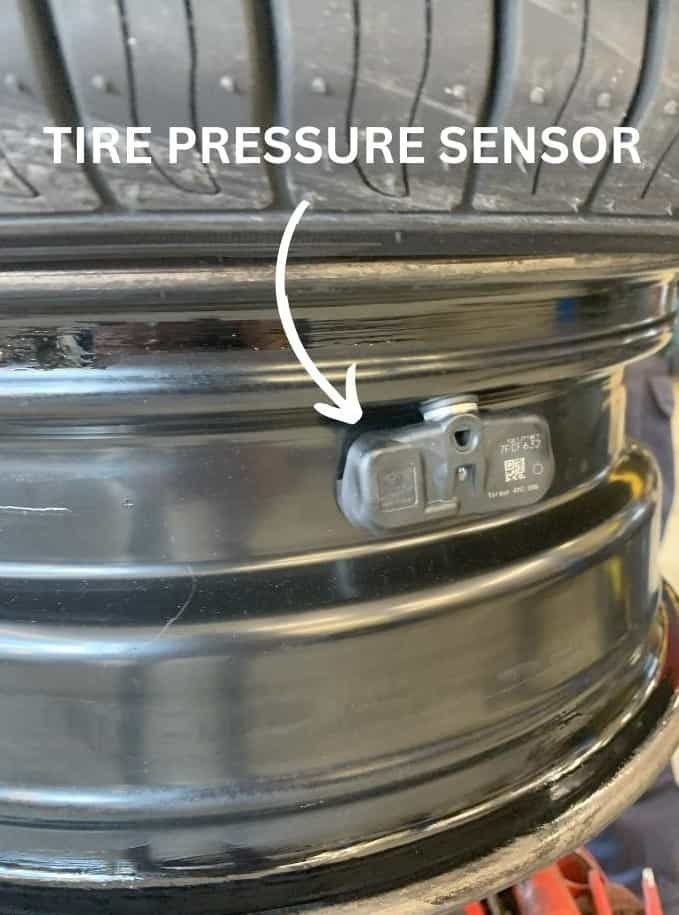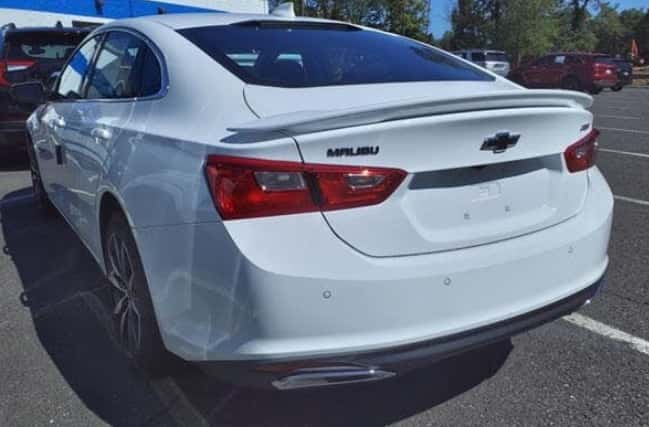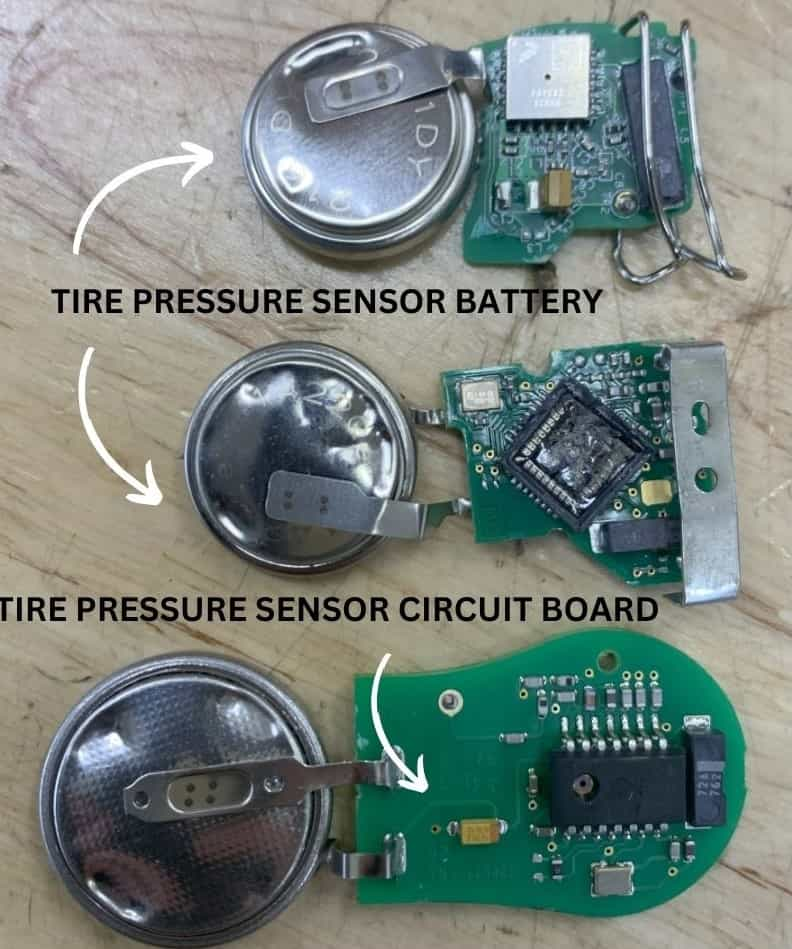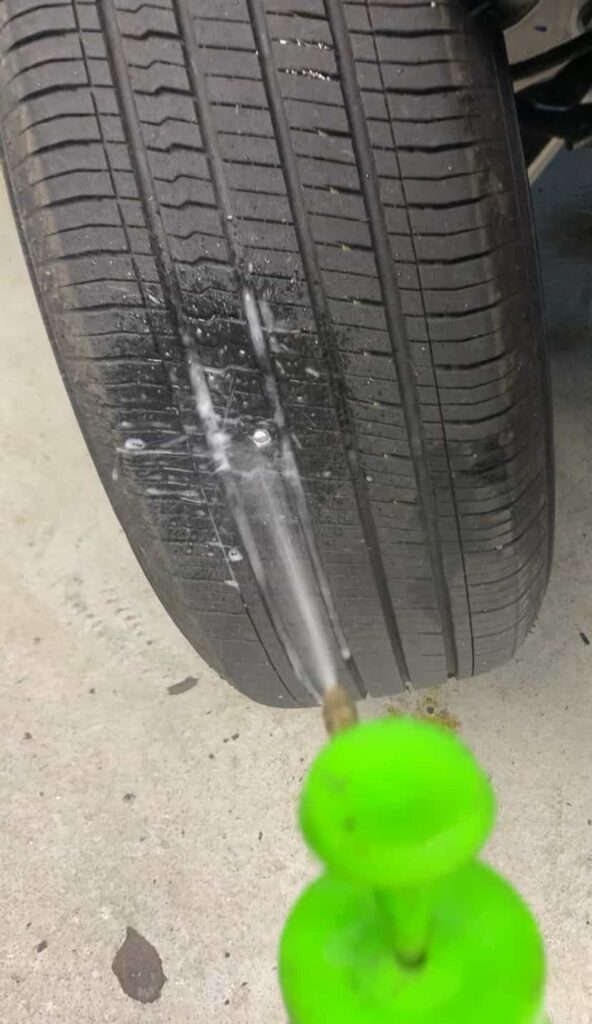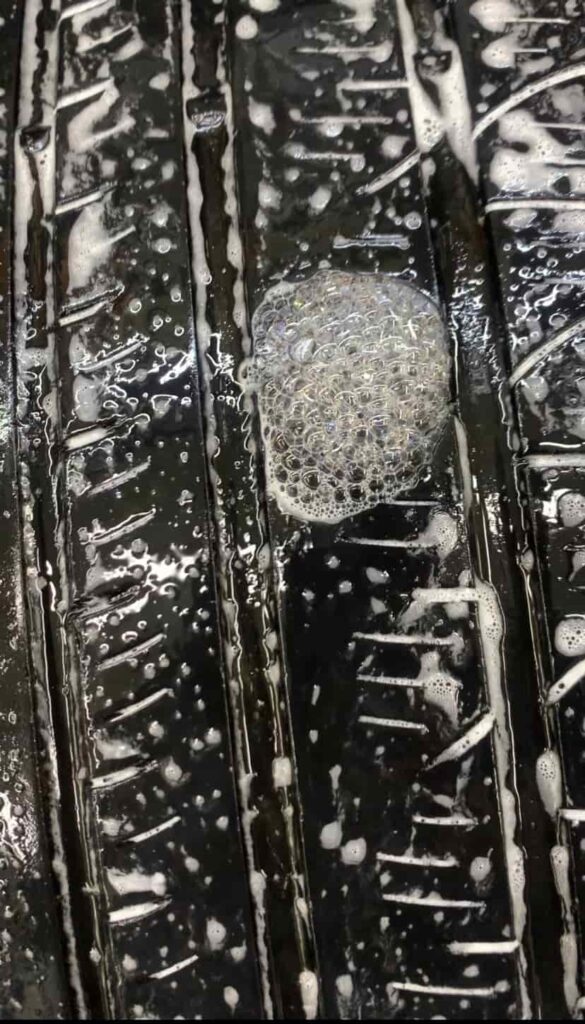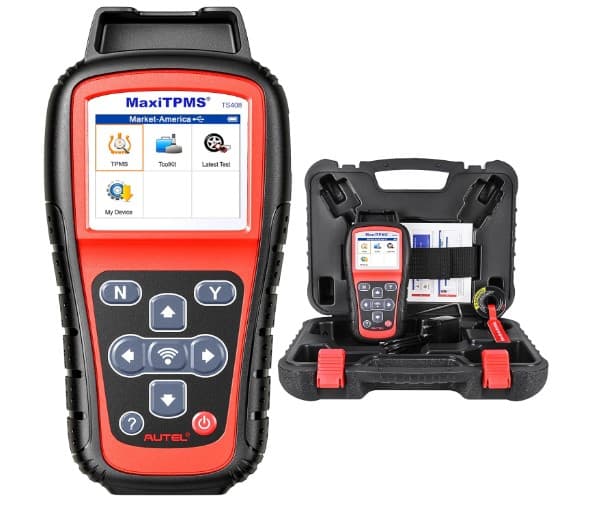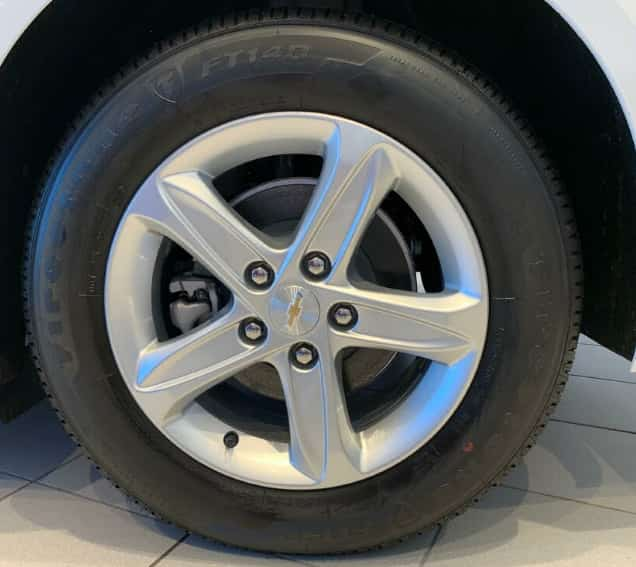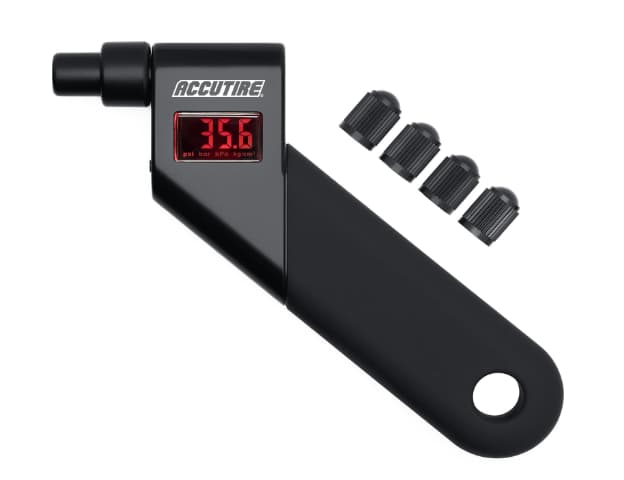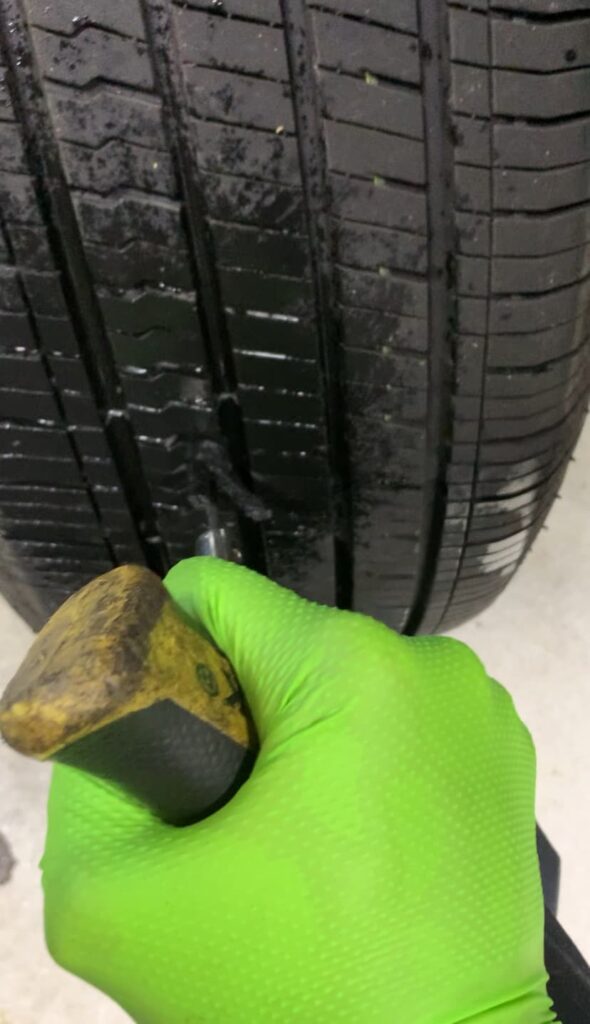What is the Chevy Malibu Tire Pressure System?
The TPMS in your Chevrolet Malibu is an underrated and essential feature of your car. The tire pressure monitoring system has 3 main parts; the Chevy Malibu ECM, Chevy Malibu TPMS receiver module, and its 4 tire pressure sensors. These different parts work together to provide real time tire pressure on the Chevy Malibu information display as well as alert you when the tire pressure is low.
How Does the Chevy Malibu Tire Pressure System Work?
Tire Pressure Sensors: Each wheel of the Chevy Malibu has its own tire pressure sensor. They are not visible without removing the tire from the wheel but sit at the end of each valve stem. Each tire pressure sensor measures its tires current air pressure and tire temperature.
TPMS Communication: Each tire pressure sensor has a transmitter built in to transmit its tires data to the Chevy Malibu’s TPMS receiver module. The transmitter uses radio signal waves to send and receive the tire data.
Chevy Malibu TPMS Receiver Module: The tire pressure sensor data is first sent to the TPMS receiver module.
Chevy Malibu ECM: After the TPMS receiver module receives all the data from each tire, it then forwards this information to the car’s main computer, aka the ECM. The ECM analyzes the data and compares the tire pressure and tire temperature to a set of thresholds.
Low Tire Alert: If the ECM discovers the current tire pressure is below the Chevy Malibu tire pressure threshold, it sets off a Low Tire Alert message to the information display screen.
TPMS Check: The Chevy Malibu TPMS has a built-in self-diagnostic feature to let the driver know if the tire pressure monitoring system itself is not functioning properly. If the TPMS is not working correctly, the low tire pressure light will begin to flash.
How to Reset the Chevy Malibu Tire Pressure Light
🔎 The Chevrolet Malibu does not have a TPMS reset button.
Wait for the tires to be cold.
Calibrate all 4 Chevy Malibu tire’s inflation to the suggested levels found on the inside of the driver side door.
Drive the Chevy Malibu at speeds greater than 25 Mph for a few minutes.
How to Relearn the Chevy Malibu Tire Pressure Sensors
The Chevy Malibu tire pressure sensor relearn procedure should be followed after tire services (tire balances, wheel alignments), tire rotations, and tire pressure sensor service or replacements. This procedure ensures that the Chevy Malibu ECM recognizes the correct and current position of each tire on the vehicle.
Inflate all 4 tires to about 40 Psi.
Turn the Chevy Malibu ignition On while keeping the engine Off.
On the information display screen, select Menu.
Select Vehicle Information.
Select Tire Pressure Menu.
Select and hold the SET/CLR button.
The information display screen will issue the message “Are you sure that you want to relearn?”
Select “Yes”
The Chevy Malibu horn will beep twice if the above steps are completed correctly.
The information display screen will provide the message “TIRE LEARNING ACTIVE”
Get out of the car and go to the front driver side tire
(front left).Press the valve stem core in and begin releasing air from the tire until the horn beeps.
Head to the front passenger side tire (front right) and let air out of the tire until the horn beeps.
Head to the rear passenger side tire (rear right) and let air out of the tire until the horn beeps.
Head to the rear driver side tire (rear left) and let air out of the tire until the horn beeps.
If this process is completed successfully and you hear the horn beep after each tire sensor relearn, the “tire learning active” message on the screen will disappear.
Turn the Chevy Malibu ignition Off and readjust all the tires air pressure back to the proper air levels.
2023 Chevy Malibu Tire Pressures
TIRE SIZE | FRONT PSI | REAR PSI |
205/65R16 | 35 | 35 |
225/55R17 | 35 | 35 |
245/45R18 | 35 | 35 |
245/40R19 | 36 | 36 |
Reasons For the Chevy Malibu Low Tire Pressure Indicator Activation
Unbalanced tire inflation (either insufficient or excessive)
Tire losing air
Absent TPMS sensors
Draining or defective TPMS sensor batteries
Complications with the TPMS receiver module or Chevy Malibu’s ECM
Electromagnetic disturbance from other cars or electronics
Variances in air temperature or altitude
Exceeding the vehicle’s weight capacity
Employing tire chains on tires
Excessive window tinting
Fluctuations in roadway temperature
Unequal tire dimensions and sizes
Wheel misalignment
Software glitches in TPMS module or ECM
Damage to TPMS sensors during tire mounting
Forgetting to reset TPMS/relearn the TPMS sensors post tire replacement
Tire valve stem issues
Chevrolet Malibu Tire Pressure Sensor Batteries
Each tire pressure sensor in each wheel of the Chevy Malibu is powered by a small silver oxide battery. Each battery has a lifespan of about 5-10 years or 100,000-150,000 miles. The batteries power the circuit board and transmitter of each Chevy Malibu tire pressure sensor. TPMS sensor batteries are non-replaceable and non-rechargeable, once the battery is low or dead the tire pressure sensor must be replaced with a new one.
Diagnosing & Troubleshooting the Chevy Malibu Tire Light
The tire pressure light in the Chevy Malibu can be stubborn as well as frustrating to many drivers. The following is a list of troubleshooting tips to help figure out why the tire light is on and how to get it to turn off when the standard TPMS reset process does not work.
TIP 1: IS YOUR TPMS WORKING PROPERLY OR IS A TIRE LOSING AIR?
If your tire light is on, you inflate all your tires to the recommended 35 Psi and the tire light turns off, this means your Chevy Malibu’s tire pressure monitoring system is working properly. If the tire light comes back on after it has turned off (after inflation), this likely means you have a tire leaking air. Check all your tire pressures again with a manual tire gauge and find out which one has lost air pressure.
TIP 2: A GUIDE TO LOCATING A TIRE AIR LEAK ON YOUR CHEVY MALIBU
Once you have determined which tire is losing air pressure, follow these steps to find out where on the tire it’s leaking from.
What You Need: Tire inflator/pump, spray bottle, water, liquid soap.
Steps:
Use a tire inflator to pump the tire pressure to 35-40 Psi.
Mix water and liquid soap into the spray bottle. (Windex also works)
Spray the tire with the water/soap mixture. Soak the entire tire.
Inspect the tire for air bubbles.
Trace the air bubbles to the source.
🔎If the tire leak is on the tread of the tire, the tire can likely be repaired with a tire patch or tire plug. If the leak is on the bead seal of the tire, the tire needs to be bead sealed. If the leak is coming from the valve stem, the valve stem needs to be replaced.
TIP 3: HOW TO PINPOINT FAULTY TPMS SENSORS ON YOUR CHEVY MALIBU
If you believe the reason your Chevy Malibu tire pressure light is active is due to a faulty or damaged tire pressure sensor, you can diagnose the TPMS with a TPMS programming/relearn tool. I have personally been using Autel TPMS programming tools for all tire pressure sensor diagnostic work at my shop. Essentially, you connect the TPMS tool with the Chevy Malibu via the OBD2 connector. You scan each tire pressure sensor with the tool and the tool provides an analysis report on each tire pressure sensor. It provides information such as sensor battery life, tire temperature, and tire pressure signal strength.
🔎If the diagnostic report shows a sensor has a low or depleted battery, shows highly improbable (or crazy) readings such as tire temperature -179 degrees, or has transmission signal issues, that tire pressure sensor needs to be replaced.
TIP 4: DISCONNECTING AND RECONNECTING THE CHEVY MALIBU'S BATTERY FOR TPMS RESET
The Chevy Malibu engine control module (main computer) records each instance of a low tire pressure alert in its memory. To reboot and potentially delete the Malibu’s memory you can unplug it from its power source, the 12 volt battery.
Disconnect the negative terminal of the Chevy Malibu’s battery.
Wait a moment and then reconnect and tighten the battery terminal.
Drive the Malibu for 30 minutes at a constant speed of 50 Mph.
🔎If you follow the above steps and the tire light turns off and then turns back on while you are driving, your Chevrolet Malibu either has a tire pressure sensor with a low battery or one or more tires is losing air pressure.
TIP 5: TROUBLESHOOTING TPMS RELEARN FAILURES IN YOUR CHEVY MALIBU
If your attempt at the Chevy Malibu TPMS relearn procedure failed, try this:
Release at least 15 Psi from the problematic tire.
Use a tire inflator to inflate the tire to 40 Psi. (5 psi over the recommended 35 Psi)
Drive the Malibu for a few minutes with the tire overinflated.
Follow the Chevy Malibu TPMS relearn procedure outlined above.
TIP 6: HOW TEMPERATURE AFFECTS TIRE PRESSURE IN THE CHEVY MALIBU
Tire temperature and air temperature have a substantial impact on tire pressure in the Chevy Malibu. A common rule of thumb states: The air pressure in a tire will fluctuate by 1 Psi for every 10-12°F change in temperature. A common occurrence might go like this; Park your Chevy Malibu overnight when the air temperature is 76°F, in the morning the air temperature has fallen to 46°F and your low tire pressure light is now on. This is because the 30°F decrease in air temperature has caused the air pressure in the Malibu’s tires to decrease by at least 3 psi. The opposite is also true, as the air and tire temperature increases from the weather and from driving, the tire pressure will increase. This means your Chevy Malibu low tire pressure light can be triggered and then also turn off all by itself by just being exposed to the weather and driving.
🔎The best way to counter this issue is to wait for your tires to cool (wait at least 3 hours after driving) to set and adjust your tire pressure. This is the only way to accurately measure the tire air pressure in their “cold recommended” state.
COMMON CHEVY MALIBU TIRE PRESSURE QUESTIONS
WHAT IS A SAFE TIRE PRESSURE IN THE CHEVY MALIBU
The only safe tire pressure in the Chevy Malibu is the recommended tire pressure of 35 Psi.
HOW DOES TIRE PRESSURE INFLUENCE GAS MILEAGE IN THE CHEVY MALIBU?
In a Chevy Malibu, tire pressure plays a pivotal role in determining gas mileage. Properly inflated tires ensure optimal contact with the road, reducing rolling resistance and thereby maximizing fuel efficiency. According to studies, for every 1 PSI drop in tire pressure below the recommended level, the Malibu can experience up to a 0.2% decrease in gas mileage.
MANAGING TIRE PRESSURE SENSORS WHEN CHANGING CHEVY MALIBU WHEELS AND TIRES
If you replace the tires on the Chevy Malibu, follow the standard TPMS reset and tire pressure sensor relearn procedures. If you replace the wheels or rims on the Malibu, remove the tire pressure sensors from the old wheels and install them into the new wheels or purchase a set of 4 new tire pressure sensors and program them to the Chevy Malibu ECM using a TPMS programming tool.
DRIVING WITH THE CHEVY MALIBU'S LOW TIRE PRESSURE LIGHT ACTIVE
We advise not driving with the low tire pressure light on. Manually check the Malibu’s tire pressures with a gauge and determine why the tire light is on. Once you have found the cause of the low tire light, you can determine how safe it is to keep driving.
DRIVING LIMITS WITH THE CHEVY MALIBU'S TIRE LIGHT ACTIVE
The distance traveled with the tire light on in your Chevy Malibu should be determined by why the tire light is on. If you have a tire losing air, you should stop driving and fix the issue immediately.
WHY IS THE CHEVY MALIBU TIRE PRESSURE LIGHT FLASHING?
The tire light is flashing in your Chevy Malibu if one or more tire pressure sensors have a communication issue with the car’s TPMS receiver module or ECM. This usually occurs due to either a TPMS sensor with a low battery or driving with the spare tire on (because there isn’t a sensor in the spare tire). When the tire light is flashing, this is called a TPMS malfunction.
EFFECTIVE SOLUTIONS FOR TIRE PUNCTURES: PLUGS VS. PATCHES
We use tire plugs to fix tire punctures with great success at our shop. If the punctures are very large we suggest tire patches. If the puncture is on the sidewall of the tire or if the tread of the tire is very low, the tire will need to be replaced.
WHAT ARE THE POTENTIAL RISKS OF USING TIRE SEALANTS IN YOUR CHEVY MALIBU?
When you use a tire sealant like fix-a-flat or slime to temporarily repair a tire on your Chevy Malibu, you’re essentially pushing a liquid into the tire. Due to the fact that tire sensors are also inside the tire and electronic devices, the tire sealant can potentially damage the tire pressure sensor. After using a tire sealant, have your tire pressure sensors inspected for damage.
Everything in this article is applicable to all Chevrolet Malibu models and versions including the Chevrolet Malibu LS, RS, LT, and 2LT.
Please note that this blog post contains Amazon affiliate links. This means that if you make a purchase through one of these links, we at TPMSRESET.COM may earn a small commission at no extra cost to you. We only recommend products that we personally use and believe in. Thank you for supporting us.

